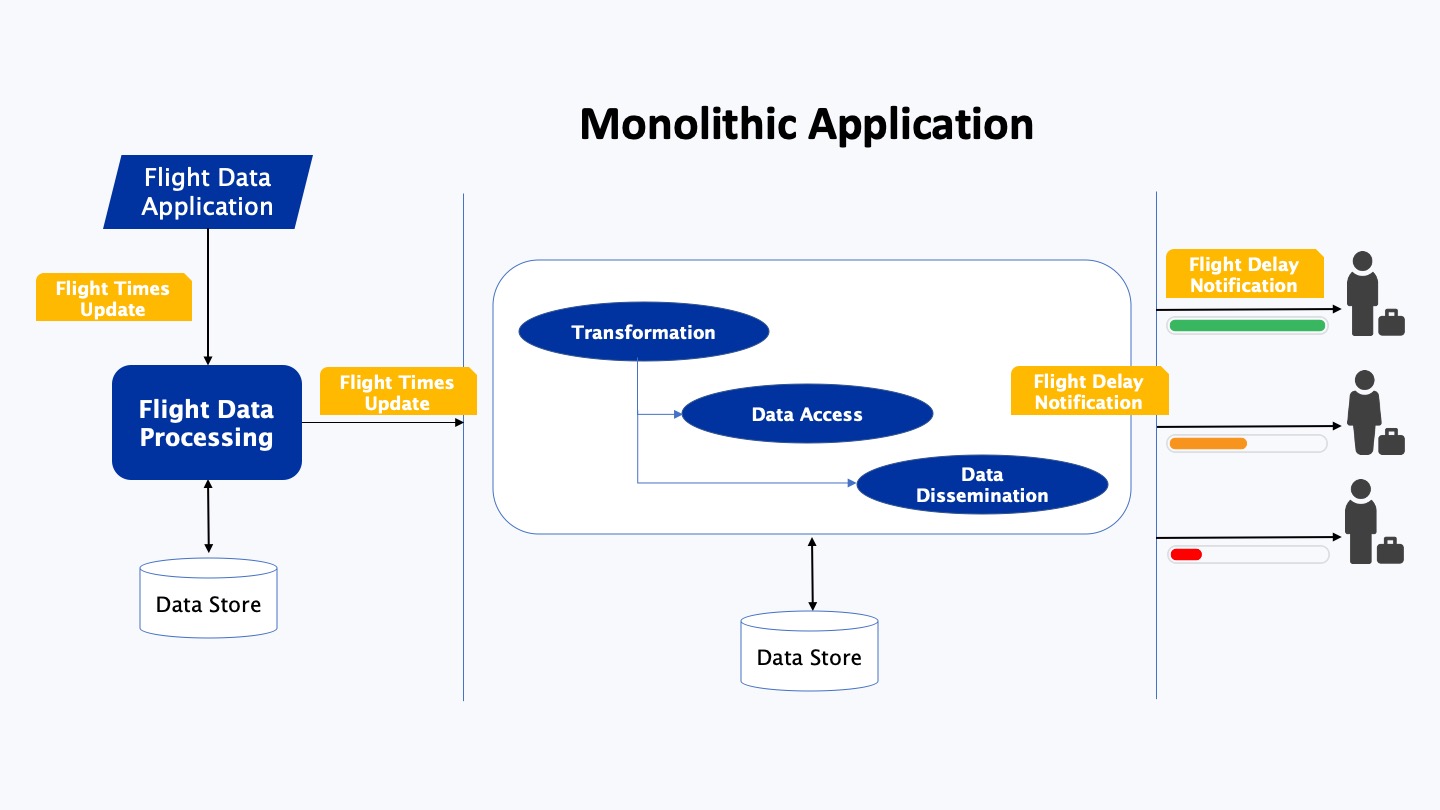The lifecycle of data in the aviation world is short. In a brief moment, data can lose its significance.
Imagine a scenario where a passenger had to leave his investor meeting mid-way to catch a flight, but while on the way to the airport he gets a notification that his flight is delayed by five hours. Call it sheer hard luck!
But what if upon speaking to customer support, he gets to know that the delay was already known to them some three hours back? However, due to a lot of notification traffic, there was delay in the delivery, thus the information could not be relayed earlier. We are definitely talking about a disgruntled passenger!
A few more such scenarios and we see a gradual shift in passenger loyalty where the preferred airport hub or airline carrier is no longer the preferred one. In today’s cut-throat competition, where every organization is striving to provide the best customer experience, such cases can do irreparable damage to an organization.

A scalable and resilient IT architecture that can transmit data in a flash
The solution lies in building a highly efficient and scalable IT architecture which allows the aviation industry to expand its wings. An architecture which is resilient and fault-tolerant enough to withstand IT challenges, while ensuring high-quality service.
This brings microservices-based architecture to the forefront, which enables systems to exchange data in the most efficient manner. With processing happening in nanoseconds, data is transmitted in the blink of an eye.
The evolution of microservices
Traditionally, interfaces were built as large monolithic applications which were self-contained and deployed on one of the middleware platforms. Middleware is a software component that sits between the operating system and the enterprise applications. It bridges the gap between different components/applications in an IT ecosystem.
However, as time progressed, these monolithic applications became too complex and stringent. Moreover, as they were tightly coupled, they were low on scalability and agility and had limited fault tolerance.
This gave rise to a new architectural style in which the applications were broken down into small independent services called microservices. Each microservice performs a specific task or function and is part of the application chain to deliver the required functionality. The architecture supported continuous integration/continuous deployment (CI/CD) of applications in the most efficient manner. It enabled the evolution of technology stack by supporting polyglot development methodology, which allowed implementation of business requirements through the best-fit development framework.
With cloud-native, containerized microservices, organizations can reap many benefits from this architecture style. The architecture facilitates products or services to be launched faster whilst decreasing development costs.
Ensuring business continuity even during adverse conditions
This prompted us to build our services and solutions using such proven tools and technologies which are flexible enough to upscale or downscale the essential services automatically, based on parameters such as the number of service requests, resource utilization statistics, and so on.
A notification service that is built as a microservice with a scalable mode set is capable of scaling up or down depending on the system load. This ensures that data is transmitted in real time to all connected parties.
The scalability can be enabled at the microservice level, which means that only the service receiving a heavy load is scaled up. For instance, in case database fetches are slow, scaling up the data transformation service will not help. Therefore, the resources can be concentrated on the problematic area, thus promoting optimization of IT resource investments made by airports and airlines.

Another factor which pulled us to use this architecture style is the robustness it provided. As any IT system is susceptible to malfunctioning, a highly available architecture is the need of the hour. By deploying microservices on a containerized setup, we are able to build a resilient underlying infrastructure.
The containers which run the microservices are continuously monitored. The architecture is designed in a manner that, in case one of the containers becomes unavailable, it automatically starts on the same or another node, ensuring continuity of service.
The agility, scalability, and robustness of this architecture altogether results in marked improvement in real-time data dissemination to end systems, even during disruptive scenarios. In totality, it serves a dual purpose: helping airports and airlines realize the full potential of their IT investments, while improving passenger satisfaction.

